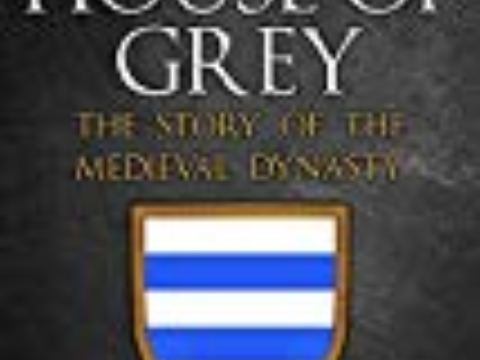The Queen and the Heretic
Two truly remarkable women
Chapter 3 : The Pilgrimage of Grace
Having become ‘Bible Christians’, it would not have been difficult for women of their station to follow their new-found faith discreetly but, far from taking advantage of their social standing to avoid trouble, Catherine and Anne used their position to promote what they now understood to be God’s truth. Frightening experiences in 1536-7 may well have strengthened their faith. In those months most of northern England erupted into the rebellion known as the Pilgrimage of Grace. Having rejected the Pope and proclaimed himself Head of the Church in England, Henry was bent on eradicating all centres of potential papistical discontent. When he closed the monasteries thousands of his outraged subjects, egged on by clergy and dispossessed monks, took up arms in their defence. In separate incidents the homes of Anne and Catherine were invaded by angry rebels. Their male relatives were captured and forced at swordpoint to join the Catholic protest. Catherine, by now widowed and remarried to John Neville, Baron Latimer, was living at Snape Castle, near Bedale, Yorkshire. In January 1537, Latimer, at his wits end, wrote to the king: ‘the commons of Richmondshire … have entered my house at Snape and will destroy it if I come not home shortly. If I do not please them I know not what they will do with my body and goods, my wife and children’. The dilemma was brutally real for the guardians of law and order caught between the anger of the king and the mob fury of his Catholic subjects. It is hard to conceive that the impact on Catherine and Anne can have done anything other than confirm their mistrust of traditionalists who were going to such lengths to defend what Tyndale called ‘historical faith’.
The crisis passed. Henry triumphed by a mixture of military threats and false promises. Determined to have his cake and eat it, he raped the church of its lands and treasures while claiming to remain loyal to Catholic dogma. He encouraged doctrinal reform while insisting on his own unimpeachable orthodoxy. He sanctioned the occasional beheading of ‘papists’ and the burning of ‘heretics’. Small wonder that many of his subjects did not know what they were supposed to believe. As for those who were sure of their faith, whether Catholic or evangelical, martyrdom remained a distinct possibility.
Soon after the ‘commotion time’ Anne Askew, now 15 or 16, was married. The auguries for future domestic happiness were not good. It is abundantly clear from her later history that Anne was a headstrong young woman, who knew her own mind and was not inhibited in declaring it. Her marriage to Thomas Kyme, member of a gentry family whose lands were located at Friskney, deep in the Lincolnshire fens, took place by default. Thomas had been intended as the husband of the eldest Askew girl, Martha. Martha died before the wedding and, rather than cancel all the negotiations that had been made, it was decided to substitute Anne. So, this girl in her mid-teens had to leave family, friends and the familiar meadows and woods of the Lincolnshire Wolds for the flat, damp fenland and a people who, by repute, were as unwelcoming as the landscape. Worse still, she was joining a family committed to the old ways: the Kymes had played a prominent part in the recent Catholic uprising. For a couple of years Anne disappears from view. According to legend she and Thomas had two children. Her duties as wife and mother will have kept her busy. Then, in 1539, something of volcanic significance happened.





